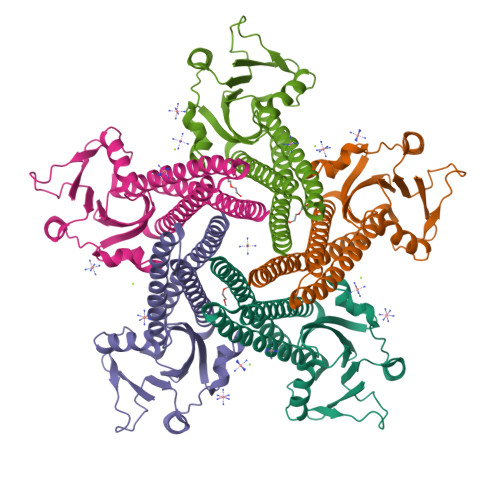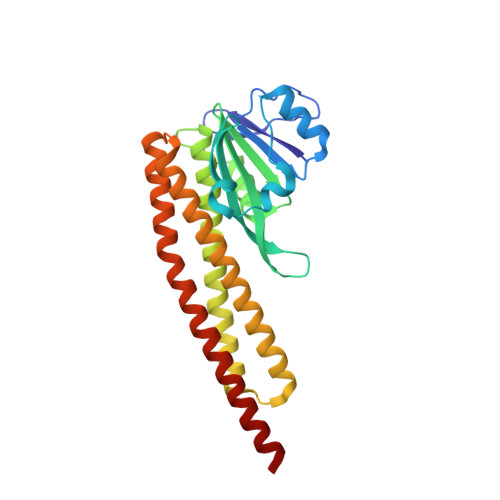Structure and Cooperativity of the Cytosolic Domain of the CorA Mg(2+) Channel from Escherichia coli.
Lerche, M., Sandhu, H., Flockner, L., Hogbom, M., Rapp, M.(2017) Structure 25: 1175-1186.e4
- PubMed: 28669631
- DOI: https://doi.org/10.1016/j.str.2017.05.024
- Primary Citation of Related Structures:
5N77, 5N78 - PubMed Abstract:
Structures of the Mg 2+ bound (closed) and apo (open) states of CorA suggests that channel gating is accomplished by rigid-body motions between symmetric and asymmetric assemblies of the cytosolic portions of the five subunits in response to ligand (Mg 2+ ) binding/unbinding at interfacial sites. Here, we structurally and biochemically characterize the isolated cytosolic domain from Escherichia coli CorA. The data reveal an Mg 2+ -ligand binding site located in a novel position between each of the five subunits and two Mg 2+ ions trapped inside the pore. Soaking experiments show that cobalt hexammine outcompetes Mg 2+ at the pore site closest to the membrane. This represents the first structural information of how an analog of hexa-hydrated Mg 2+ (and competitive inhibitor of CorA) associates to the CorA pore. Biochemical data on the isolated cytoplasmic domain and full-length protein suggests that gating of the CorA channel is governed cooperatively.
Organizational Affiliation:
Department of Biochemistry and Biophysics, Center for Biomembrane Research, Stockholm University, 106 91 Stockholm, Sweden.





















